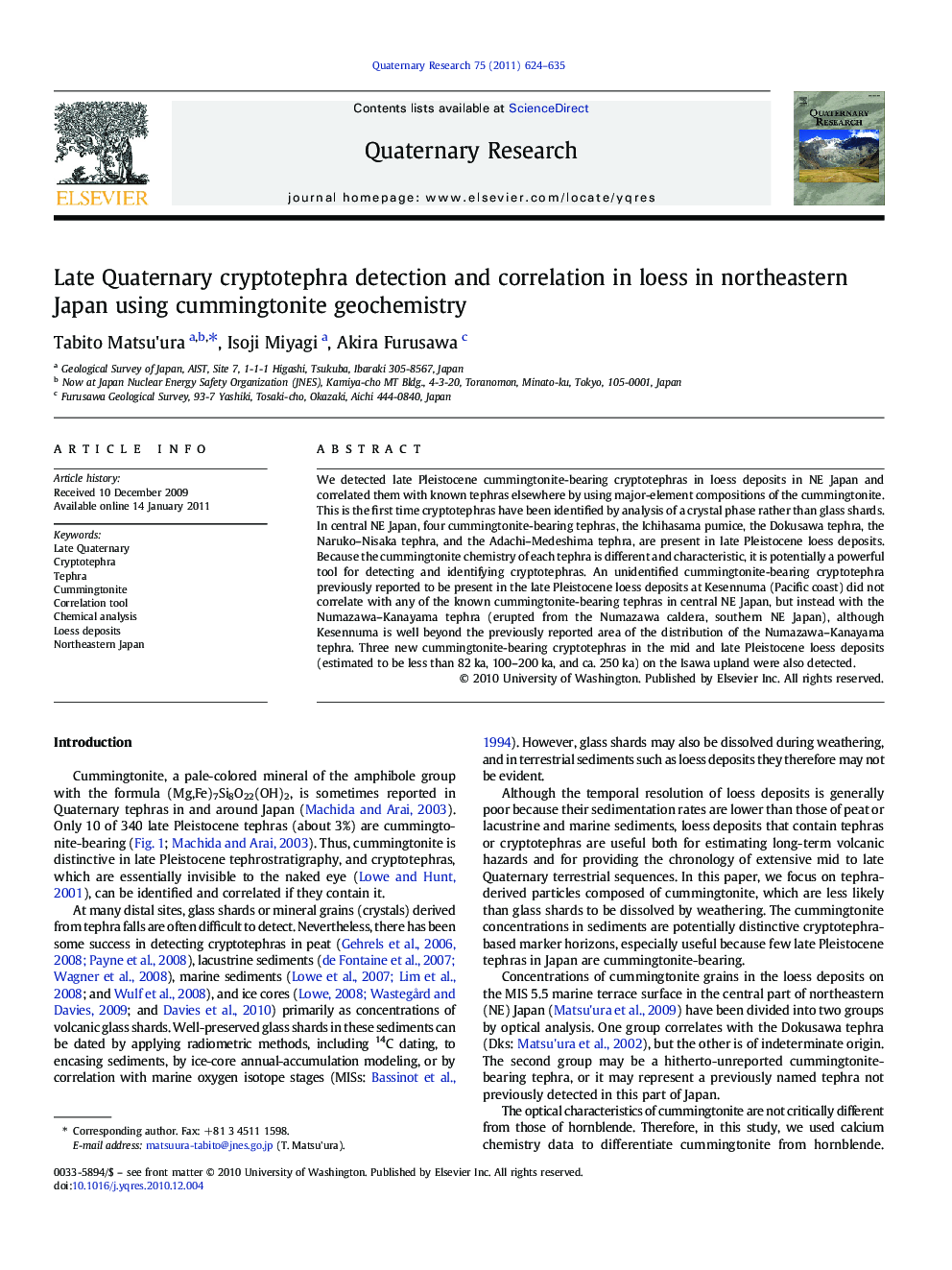| Article ID | Journal | Published Year | Pages | File Type |
|---|---|---|---|---|
| 1045834 | Quaternary Research | 2011 | 12 Pages |
We detected late Pleistocene cummingtonite-bearing cryptotephras in loess deposits in NE Japan and correlated them with known tephras elsewhere by using major-element compositions of the cummingtonite. This is the first time cryptotephras have been identified by analysis of a crystal phase rather than glass shards. In central NE Japan, four cummingtonite-bearing tephras, the Ichihasama pumice, the Dokusawa tephra, the Naruko–Nisaka tephra, and the Adachi–Medeshima tephra, are present in late Pleistocene loess deposits. Because the cummingtonite chemistry of each tephra is different and characteristic, it is potentially a powerful tool for detecting and identifying cryptotephras. An unidentified cummingtonite-bearing cryptotephra previously reported to be present in the late Pleistocene loess deposits at Kesennuma (Pacific coast) did not correlate with any of the known cummingtonite-bearing tephras in central NE Japan, but instead with the Numazawa–Kanayama tephra (erupted from the Numazawa caldera, southern NE Japan), although Kesennuma is well beyond the previously reported area of the distribution of the Numazawa–Kanayama tephra. Three new cummingtonite-bearing cryptotephras in the mid and late Pleistocene loess deposits (estimated to be less than 82 ka, 100–200 ka, and ca. 250 ka) on the Isawa upland were also detected.
